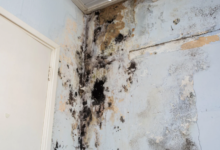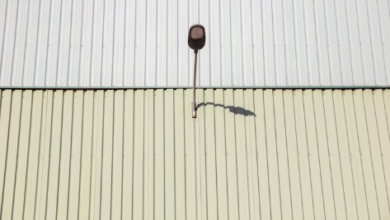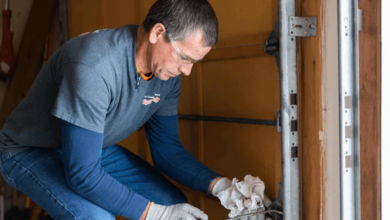Plasterer or DIY plastering? Pros and cons at a glance

There’s a sweet spot between weekend courage and professional calm. You can roll up your sleeves, tape off the skirtings, and make solid progress until the light hits the wall at 4 p.m. and every ripple says “nearly.” Corners need a steady hand; window reveals ask for patience; setting times don’t care about dinner plans. A good stukadoor brings rhythm as much as skill: clean mix, tight trowel, feathered edges, then that last quiet pass when the surface turns glass smooth. If you’d rather spend Saturday living in your home than learning by dust and splatter, hand it over. We’ll show up on time, protect your floors, keep the site tidy, and leave you with straight lines that stay straight no excuses, no surprises. That’s the Nourklusbedrijf way: less noise, more finish.
What you gain (and risk) with DIY plastering
Do it yourself plastering is most attractive when the area is small, the substrate is simple, and you’re comfortable practicing on less visible surfaces. You set the pace, you save on labor, and you learn a skill you can reuse. The risks are easy to underestimate: uneven suction leading to patchy drying, trowel marks that keep “telegraphing” through paint, corners that wave under light, and most common the final 5% that takes 50% of the time. If your walls are wavy, have mixed materials (brick, old plaster, fresh board), or include many openings, a professional plasterer will often be faster and cheaper once you include rework. Material choice is another trap. Multi finish plasters, base coats with fibers, bonding agents, primers each has a role. Using the wrong combination can create micro cracks or delamination months later. A seasoned plasterer reads the wall first, then chooses the stack (prep, base, skim) that suits the substrate not just what happens to be on sale.
See also: Benefits of Adding Energy-Efficient Features to Your Home Addition
When a professional plasterer is the smarter spend
Complexity compounds quickly. Ceilings above 2.6 meters, long hallway runs, curved stairwells, damp prone rooms, and any area that demands dead straight reveals are classic “call a plasterer” cases. Pros carry the right trowels and rules, understand suction control, and know how to set beads and stop ends so your paintwork looks crisp instead of “almost.” The value isn’t just speed; it’s predictability. A good plasterer sequences rooms to keep you living at home, protects floors and fixtures properly, and delivers a surface that needs minimal sanding saving time on every task that follows.
Surface preparation: The quiet make or break
Beautiful finishes start long before the first coat. Existing paint might need deglossing; dusty masonry calls for a stabilizing primer; glossy patches require keying; and mixed substrates need bonding to even out suction. A professional plasterer will test small areas, adjust primers, and set corner beads so the skim has something true to ride against. Skipping any of this can lead to blisters, “hollows,” and feather edges that fail when you tape or paint. If you do go DIY, spend more time on prep than you think your finish will thank you.
Time, cost, and the real price of redo
DIY looks cheap until you count second tries. Buying tools, mixing gear, protective sheets, primers, and multiple bags of plaster adds up. More importantly, if your first pass isn’t flat, every trade after you painter, tiler, carpenter will need extra time to correct. A professional plasterer absorbs those headaches with experience and better throughput. For many homes, a pro team completes in days what DIY stretches into weeks, reducing disruption and the risk that a half done room lingers while life gets busy.

Finish quality under real lighting
Daylight and LEDs reveal everything. That faint ripple you barely notice at noon becomes a waving line at 8 p.m. A trained plasterer works the light cross troweling, timing water, and closing at the right moment to achieve a “glass” finish that stays flat after paint. They’ll also align planes: ceilings meeting walls cleanly, window returns square, skirting lines straight so flooring and trim fit snugly. These micro decisions separate “nice from a distance” from “crisp up close.” Plaster is heavy; dust is invasive. Lifting boards, working overhead, and managing buckets and cables can be risky in tight spaces. A professional plasterer sets safe access, routes cables off walkways, and uses dust control methods so your home doesn’t feel like a jobsite for a month. Proper cleanup and disposal also matter especially when you’re renovating around children or sensitive electronics.
Warranty, accountability, and sequencing other trades
If the ceiling develops hairline cracks or a reveal chips during kitchen install, who fixes it? With an established plasterer, you have a single point of accountability and a documented scope. Sequencing is smoother, too: plastering before kitchen installation, after electrical first fix, before final floors. At Nourklusbedrijf, we coordinate so your schedule moves forward without the “who goes first?” stalemate. You don’t have to choose all DIY or all pro. Many clients handle low risk prep clearing rooms, removing loose paint, basic masking then bring in a plasterer for beads, skim, and ceilings. Others ask us to tackle complex spaces (stairs, bathrooms) while they practice in a closet or garage wall. Hybrid plans keep costs down and quality high, and they let you learn without gambling on the most visible areas of your home.
How Nourklusbedrijf delivers a clean, predictable result
We start with a short survey: substrate, moisture, previous coatings, and light direction. Then we propose a room by room plan with clear start/finish dates and a tidy sequence that keeps routes open. On the day, we protect floors and fixtures, set beads and stops, control suction with the right primers, and skim with consistent timing so the finish closes tight. Your lead plasterer will walk you through drying expectations and paint timing, and we stand behind our work with a straightforward warranty.
A quick decision checklist (use this to choose fast)
- Area complexity: ceilings, long runs, curves, or many openings → hire a plasterer.
- Substrate mix: brick + old plaster + new board → pro bonding/priming pays off.
- Time pressure: need rooms back this week → professional throughput matters.
- Finish expectation: “paint ready under LEDs” → experienced hand and timing.
- Budget reality: DIY is cheaper only if you avoid redo; one skilled plasterer day can save three DIY weekends.
What about cost transparency?
We price by scope: preparation, beads, base coats as needed, and final skim. You’ll see exactly what’s included, what’s optional (e.g., boarding a damaged ceiling), and realistic drying times. If you prefer a capped figure, we can fix price once we’ve inspected. A trustworthy plasterer should be clear and calm about money no surprises, no “while we were here” add ons without your say so.
The bottom line
DIY plastering can be satisfying for simple, low visibility areas if you’re patient and willing to practice. For rooms you live in, lighting that shows every line, and timelines that don’t allow do overs, a professional plasterer is the safer, often cheaper choice once all costs are counted. If you want the hybrid path, we’ll design that with you, too so your effort goes where it adds value, and our team handles the precision work.
Discover how Nourklusbedrijf can support you with tailor made solutions.







